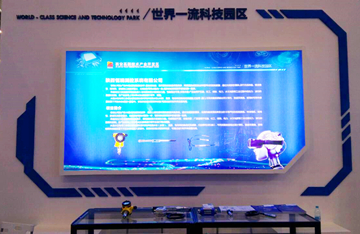How to Take Proper Lightning Protection Measures in Summer
Summer is a season with frequent thunderstorms, and lightning strikes pose a common and significant natural hazard to industrial instruments and control systems.
Factories located in areas prone to frequent lightning strikes are often affected by lightning strikes every year. These incidents result in damage to instrument systems, leading to equipment downtime and production interruptions. The direct economic losses caused by instrument system damage due to lightning strikes can range from tens of thousands to millions of yuan. The economic losses from production stoppages or reduced output due to repairs can reach several million yuan. In some cases, lightning strikes can even cause personal injuries.
Therefore, implementing effective lightning protection measures is of utmost importance for instrument professionals.
01 How does lightning cause damage to instruments?
There are two ways in which lightning can damage instrument systems: direct lightning strikes and electromagnetic induction currents. Direct lightning strikes refer to lightning that directly hits buildings, the ground, facilities, or equipment. For instrument systems, this means lightning directly striking the instrument itself or the signal lines. The intensity of a medium-strength direct lightning current is typically around 10-80 kA. Electromagnetic induction currents are surge currents induced in the circuit due to the electromagnetic effects of nearby direct lightning currents, also known as lightning surges. The intensity of surge currents varies depending on the circumstances, ranging from tens to hundreds of amperes. Direct lightning currents on the lines or surges generated by electromagnetic induction of lightning can flow along the lines and damage measurement instruments and signal receivers.
02 How to implement effective protection?
The basic principle of instrument lightning protection is to limit the current, voltage, and energy. The goal is to divert most of the lightning current to the ground before it reaches the instrument and limit the voltage generated by residual lightning currents within the range that the instrument can withstand, thereby protecting the instrument from lightning damage. Since lightning has a short duration, the residual lightning currents do not cause significant interference to the signals. Here are several measures to consider:
Grounding of field instruments: Ensure reliable grounding for instruments, instrument cabinets, and control cabinets. The grounding resistance for lightning protection devices shared with electronic equipment should be ≤1Ω, while the grounding resistance for lightning protection should be ≤5-10Ω (soil resistivity ≥100Ωm), and the grounding resistance for pole-line wires should be ≤20Ω. The metal casing of field instruments should be connected to the installation bracket through grounding screws and grounding wires. The metal casings of installation brackets, instrument protection boxes, junction boxes, and control cabinets should be connected to electrical grounding facilities nearby or to grounded metal structures. Field instruments on metal equipment, containers, tower structures, and operating platforms should be connected to equipotential bonding using the equipment and operating platforms. A segment of the instrument cable's metal protective conduit can be used as a conductor for grounding connections.
Surge protection for power supply: Install surge protectors at the front end of the power supply to limit the surge voltage and protect the instrument from voltage surges caused by lightning strikes.

For field instruments, modular surge protectors can be used. However, for instruments where it is inconvenient to use modular surge protectors, integrated surge protectors can be built-in. Instruments commonly used in tank areas, such as radar level gauges, servo level gauges, and electric valves, can utilize built-in surge protectors for easy installation and integration. Modular surge protectors can be installed at the spare inlet of the field instrument or on a three-way interface installed externally at the inlet. This is an effective installation method. The externally installed three-way interface should use a sealed threaded structure, such as NPT tapered pipe threads.
Power supply selection: Choosing a 24V power supply for the instruments can provide some lightning protection effects.
Use shielded cables for signal transmission: Shielded cables should be used for both signal transmission and instrument power lines, and proper grounding should be ensured for the shielded cables.





